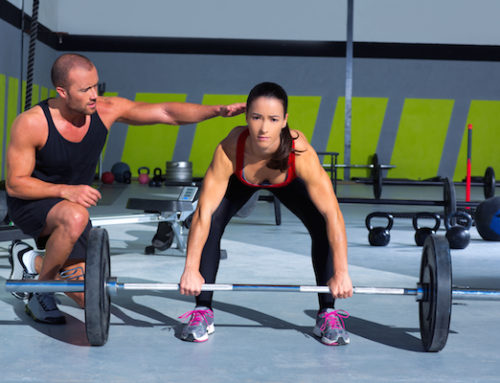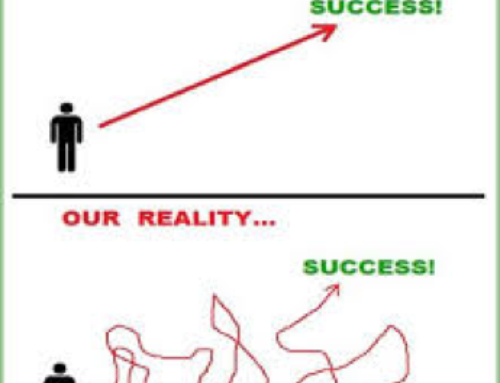Milo of Crotona
Milo of Crotona was a 6th Century BC man, born in the Italian city of Crotone, revered as one of the greatest athletes of the Ancient Greek Olympics for his inspiring feats of strength and many victories in competitive wrestling.
It is said that Milo trained for the Olympics one day by lifting and carrying a baby calf over his shoulders, walking with it some distance. The next day, Milo did the same thing, carrying the same baby calf on his shoulders. In fact, Milo did this same activity EVERY DAY leading up the Olympic games.
After 4 years of training with this daily ritual, keeping in mind what a baby calf looks like after 4 years, reports say that Milo of Crotona walked into the Olympic stadium with a full-grown heifer on his shoulders and paraded a lap of the Olympic track before killing and beginning to eat the beast.
The story of this great Warrior is the perfect example of the principle of ‘Progressive Overload’ and the potential that the body has to adapt if exposed to an incrementally increasing stimulus at a rate equal to the body’s ability to recover and grow.
See, at what point while the beast was growing did it get too heavy for Milo to carry? Unlike the straw that broke the camel’s back this never happens when the gradually increasing load is matched by the gradually adapting body, if, the load/volume/intensity/duration happens over a period of time during which the body can respond, adapt and ‘super-compensate’ for.
So how fast can this be done? How much recovery do we need?
The Super-Compensation Curve
Well, it is different for everybody, as we all have different abilities to recover, dietary habits, rest periods, exposure to stress, etc. However, the Super-Compensation Curve is the depiction of how our bodies react to such stimuli and working with this we can plan our training and programs much more scientifically.
Firstly, there is the training stimulus which shocks the body, actually damaging it on a micro level through various physical and physiological means. This can be seen on the diagram below. Following, is the period of Fatigue where the weakened body is experiencing a state that will cause the system to trigger a Recovery response such that the resulting strength/endurance/efficiency is greater than before the training stimulus. This is the Super-Compensation. If there is no future training and no further stimulus from here, then the body will regress back to the original state, and even worse potentially.
The ideal time to train (this particular muscle group or energy system) again is at the peak of this Supercompensation curve. This is at the peak of our strength and endurance and the peak of recovery. To train again before this point will result in less than optimal results, and even worse – to train before the recovery of the body has reached the original state before the initial training stimulus
(before the body has recovered) then you will end up with the condition known as ‘overtraining’, which should really be called ‘under recovering’, as it’s not so much the amount of training that is at fault but the lack of adequate recovery. This is so common
today, with people training harder than ever only to feel greater levels of fatigue in their body and loss of mental focus from long term fatigue of the Central Nervous System.
Overall, plan your exercise and exercise progressions using the philosophy of Milo of Crotona – gradual Progressive Overload, with the concept of the Super-Compensation curve to read your body when to push harder and when to pull back.
The variation can be poles apart!
So what determines that rate of recovery and how long this process takes?
This is such a popular question because the diagram above shows time on the bottom X-axis yet shows no indication of specific increments or intervals of time. Is it hours, minutes, days, months? The reason there is no markings is because of the extreme variation possible from person to person due to the many factors that affect the process. This explains why different people take more time to recover than others and even why the same person might recover well one month and fall into overtraining the
next.
Take for example the person who trains intensely on a Monday morning, then goes to work in a busy, stressful environment, does not eat well, gets a few hours of low quality sleep each night, is mentally and emotionally over-active throughout the day and does no other form of exercise or movement for the week. Four days later this person is wondering why they are still sore and has no energy to get out of bed. If they were to train again they’d be under the original baseline of energy and recovery.
Conversely, take the astute exerciser who trains intensely on a Monday morning, goes to work in a busy environment while managing their mental and emotional state conducive to a calm, refreshed physiology, eats a healthy, balanced diet full of nutrients, whole-grain carbohydrates, lean protein and fibre, adds a yoga session or relaxing massage into their lunch break to facilitate the flow of blood and oxygen, and by that same Monday afternoon they’re ready and energized for another intense training session.
Then they go home and sleep a quality seven hours before waking even more energetic than the day before.
What a significant difference? What factors create this variation?
The key components:
• Diet
- You could have a team of brick-layers waiting at your building site with all the plans and instructions they need to lay the foundations and build your house but the sad fact is that without a supply of bricks and cement they’ve got Buckley’s chance of even starting the first wall. Likewise, without the proper and adequate nutritional building blocks you cannot re-build any fatigued or broken down tissue. You MUST supply the nutrients!
- The first and foremost in regards to energy and muscle recovery is carbohydrates. By the end of your training session the glycogen (stored glucose) in the muscles is used up and depleted. Hence, we need clean, unrefined carbohydrates to replenish that fuel source. Without it you won’t be able to train intensely again or even have much energy through the day. Also, if your glycogen levels aren’t replaced then blood glucose levels may be low and your brain NEEDS glucose to function.
- The next nutritional must is protein. It constitutes one of the major building blocks for cellular repair and growth. Protein really is the bricks and mortar of muscle tissue.
- Vitamins, Minerals, Fibre and essential Fats are equally important. Together, these vital nutrients nourish the body for complete recovery.
• Sleep
- The research says it all – sleep is an absolute necessity of performance. It is measured in both quantity and quality.
- It may not seem like much goes on when you are asleep, but actually there’s a lot more than what you may think. The endless processes that occur in cycles throughout the night strongly affect our immune system, nervous system, muscular blood flow, our metabolism and hence, our recovery.
- The quality of sleep also impacts day-time moods, concentration and memory.
- The suggested requirement for most people is 6 to 8 hours of un-interrupted sleep.
- For more information on sleep see our past article called ‘Sleep – quantity vs quality’ on our website at www.conanfitness.com.
• Oxygen
- Oxygen is the life-blood of our cells. All respiration and metabolism ultimately relies on it. Therefore, supplying oxygen to the cells is critical for them to go through the necessary cellular metabolism to repair and replenish.
- Supplying Oxygen is best achieved through:
- Blood flow – By improving blood flow through movement, exercise or massage you will facilitate more oxygen getting to the cells as well as improving the removal of wastes and lactic acid, one of the culprits of muscle soreness.
- Breathing – By engaging in deep diaphragmatic breathing you can increase the oxygen in the blood and make the additional blood flow more potent.
- Slow, deep breaths rather than fast, shallow puffs.
- One of the first interventions a paramedic often does to an injured patient is apply an oxygen mask. This highlights the powerful healing properties and importance of oxygen in recovery.
• Stress
- Most people have heard of ‘fight or flight’! This is the mode of function of the nervous system when it is turned on, fired up, ready to run or fight or react. It is formally called the Sympathetic function and is characterised by blood flow to arms and legs, high heart rate and breathing and adrenalin-type chemistry. This is the state of the body when you are stressed and is the exact same function as when exercising. However, it is antithesis of being able to recover!
- Parasympathetic function is the opposite, when the body and mind are totally relaxed, typically characterised by blood flow to the brain and gut area, slow breathing and heart rate and calming chemistry. This mode is ideal for eating, sleeping, and recovering. Only in Parasympathetic function can proper recovery occur.
- The problem is that when people train, get fatigued and cause a recovery response many of them think they can adequately recovery when stressed. But this, as we’ve just seen, is the same mode of nervous function as exercising, so it’s like you are never resting. Stress is a fight or flight response, not at all conducive to recovery.
Maximising Super-Compensation
To get the most from Super-compensation and using both the philosophy of Progressive Overload, as used by Milo of Crotona and that of the Super-compensation Curve this is what we want to do:
- We want to train with nice intensity, slightly overload the body or mind.
- Then, we want to focus on optimal recovery – eat well, sleep well, add massage, yoga or deep breathing or meditation to your day to slow the mind and relax, add gentle recovery exercise (walking, easy swimming or cycling) to promote blood flow without intensity, and finally, manage your state – don’t get stressed, stay calm!
- Our aim is to recover as maximally as we can from all perspectives – energy, stored carbohydrates (glycogen), muscle fibres, nutrients, waste removal, etc. to get to the peak of the Super-compensation curve. You should feel at the peak of your energy if you are there.
- At this peak point, when everything is maximised we then want to train again even more intensely or longer/harder, higher weights, whatever, to overload and over-compensate again and continue to the cycle.
So good luck, train hard, recover well, and train hard again!
Happy recovering.





